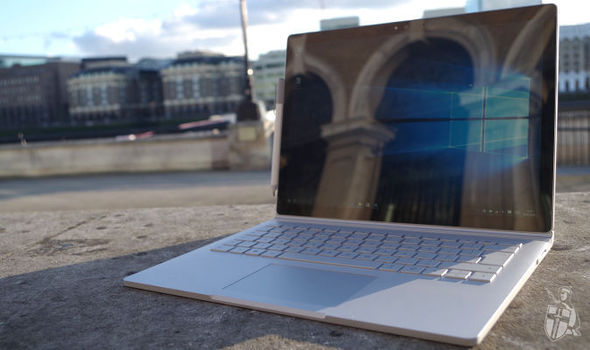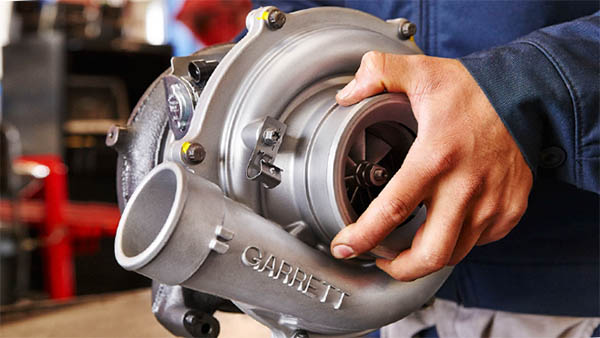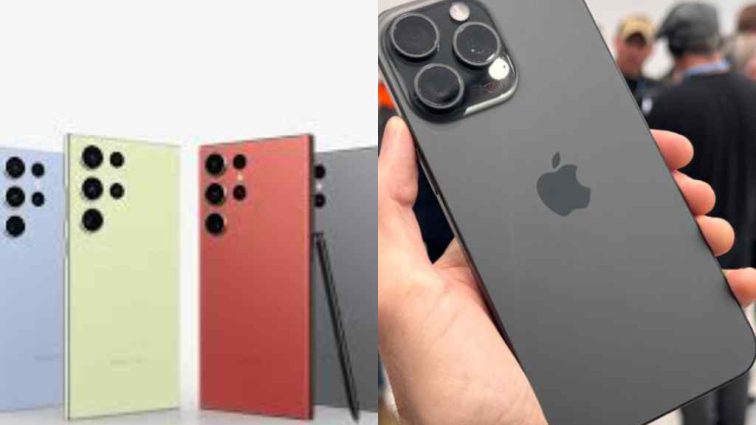Surface Book review: Microsoft’s first laptop is NOT the ultimate laptop

MICROSOFT’S first in-house laptop is a beautiful and ambitious device with a stellar touchscreen display, awesome keyboard and stylus. Unfortunately, the Surface Book is not the ultimate laptop Microsoft claims it is – as a number of niggling flaws stop it from attaining greatness.
Microsoft is becoming a master at building hardware.
From the phenomenal Surface Pro 4, with its svelte keyboard case and stylus, to the stellar point-and-shoot camera on the flagship Microsoft Lumia 950 XL – the Redmond software company has become increasingly adept at crafting every aspect of its devices.
The Microsoft Surface Book is the US firm’s first laptop. And it’s an impressive start.
But I wouldn’t recommend you buy one. At least, not yet.
Review –
Out of the box, the first thing you’ll notice is that the Surface Book looks great.
Microsoft has created a beautiful laptop with clean-cut lines and a smooth magnesium body that looks at home next to the Redmond firm’s previous Surface devices.
Like the Surface Pro 4 before it, the Surface Book has a magnetic strip to attach the Surface Pen stylus to the side of the display.
The magnet is reassuringly strong, and the Surface Pen stays with the laptop even as you drop it in and out of your bag during a busy work day.
Easily the biggest design flair is the Dynamic Fulcrum hinge – that’s what Microsoft calls the snake-like joint that bends and connects the touchscreen with the laptop’s keyboard. Aside from its functional purpose, the hinge really helps Microsoft’s first laptop stands out from a sea of MacBook Air lookalikes.
The Dynamic Fulcrum hinge is also the clever mechanic that lets you detach the screen from the base and use the touchscreen as a fully-featured Windows 10 tablet. Detaching the tablet is handled by a small icon in the taskbar, or by holding down on the designated keyboard key.
Removing the screen works well.
The system takes a few seconds to detach – coupled with a brief flash of the display – after you hold down on the keyboard key.
But after this brief wait, the screen can easily be pulled away and used as a standalone, not to mention powerful, Windows 10 tablet.
When the tablet is safely docked with the keyboard, the Surface Book feels like one solid device. You can pick up, hold and shake the laptop by its display and you’ll be hard pushed to know the Surface Book could ever detach into two separate parts.
It’s a brilliant party trick, and one Microsoft has pulled off with aplomb.
But for all its strength and eye-catching looks, the Dynamic Fulcrum hinge does leave a little to be desired. Notably, the small gap between the display and the keyboard when the laptop lid is shut. This means the Surface Book never completely seals and as a result, the gap means the chiclet keyboard and display get dirtier than rival devices.
That’s a shame because the display is easily the best feature of the Surface Book.
Microsoft's self-titled Ultimate Laptop ships with a staggering 13.5inch PixelSense display.
Microsoft has packed a stunning 3000 x 2000 pixels into the display – that works out at an unbelievable 267pixels-per-inch, one of the highest resolution displays on any laptop to date.
For comparison, Apple’s 13inch MacBook Pro with Retina Display packs 227pixels per inch, and Google’s new ChromeBook Pixel has 239pixels per inch.
For its first laptop, Microsoft has opted for a 3:2 aspect ratio.
It’s a solid screen size, and the aspect ratio means you’ll often get a glimpse beneath the fold on websites and can include more data when editing an Excel document.
Games from the Windows Store always look phenomenal on the large, spacious screen. But the 3:2 aspect ratio means you’ll have to put up with black bars when you watch a movie.
The Surface Book’s display looks phenomenal – it’s bright, pin-sharp and has great viewing angles.
Unfortunately the glossy coating can be a bit of a pain when it comes to reflecting light back into your eyes, but that’s a minor quibble with an otherwise flawless display.
The touchscreen is also a surprisingly responsive, with enough precision that you can deftly navigate around the Windows 10 desktop operating system – even when the apps, like Microsoft’s own Snippet screen recording utility, Paint, Notepad and File Explorer apps, have not been updated with touch-targets better suited to fingertips – instead of the traditional mouse cursor.
Of course, if you are having trouble tapping the on-screen menus, you can always use the finer tip on the Surface Pen.
Microsoft’s Surface Book ships with the new and improved Surface Pen, which ditches its predecessor’s complicated two button set-up in favour of a single select button that runs the length of the stylus.
Microsoft's updated stylus now supports 1,024 levels of pressure sensitivity, which results in an enjoyable and accurate drawing experience in the technology firm's own OneNote app and powerful third-party desktop applications, like Adobe Photoshop CC.
The eraser on the top of the Surface Pen is also a welcome addition.
Spinning the stylus around to erase your latest line in Photoshop or your latest bullet point in OneNote feels natural, and the Surface Pen is fast and responsive.
As are its updated motion sensors, which put the Pen to sleep whenever it detects that it has been placed on a table, or attached to the device. These improvements extend the battery life of the AAA-powered Pen to a full calendar year.
But aside its detachable display, advanced stylus and multi-touch screen – the Surface Book is primarily a laptop. And that requires a reliable trackpad and good keyboard.
Fortunately, Microsoft’s first-ever in-house laptop has both.
The laminated glass trackpad is responsive and accurate, although it feels slightly stickier on your fingertip than those found on Apple’s MacBook range. Microsoft’s trackpad is a good size, although we did find ourselves reaching for the touchscreen the more time we spent with the Surface Book.
But the highlight is the chiclet keyboard.
Surprisingly quiet and phenomenally accurate, the Surface Book keyboard is an absolute joy to type on. I found myself wishing I could wire-up the base of the laptop to my work machine and use the keyboard throughout the day.
Microsoft’s Surface Book runs Windows 10, which feels lightning-fast thanks to the 16GB of RAM and 2.6GHz Intel Core i7 processor powering our top-of-the-range review unit. Unfortunately that phenomenal power comes with a hefty £2,249.00 price tag.
Windows 10 handles the transition between laptop and tablet brilliantly.
The operating system expands the Start Menu to a full-screen Windows 8-esque view when you detach the display from the keyboard. This tablet-optimised view makes navigating around the live tiles and menus with your fingertips much easier.
Launching an app while in tablet-mode will open the software full-screen, like a mobile device rather than a traditional windowed desktop app, although this can be tweaked in the settings.
This is thanks to Microsoft’s new Universal Apps – software that adapts to the screen real estate available to it at any one time. It’s a clever solution to its new unified App Store. Unfortunately, developers have been slow to update their applications to the new adaptive standard.
As a tablet, the Surface Book is surprisingly light and feels good in the hands, thanks to the tactile magnesium build. Like the Surface Pro 4, it feels more natural to hold the device in landscape, rather than portrait mode – but that’s fine.
Using the Surface Book as a tablet to quickly scribble some notes before plugging the screen back into the base to get some serious work done with the keyboard is a great work flow. It’s one that Microsoft has been touting since the first Surface device, but is at its nexus with the Surface Book.
Unfortunately, the ability to swap between a tablet and a fully-featured laptop does result in a device with a few compromises.
As good as the Dynamic Fulcrum hinge is, it doesn’t hold the display with quite enough strength and tapping the touchscreen returns a frustrating wobble and bounce from Microsoft’s stellar screen.
It’s annoying.
The display is also a little too heavy for the laptop – since it has to function as a standalone tablet when detached from the main body of the Surface Book.
Unfortunately this means the device has a habit of toppling over when it’s resting on your lap. And that’s not great for a laptop.
The weight distribution also means you’ll struggle to open the Surface Book one handed. The tablet-display weighs heavily – the entire device clocks in at a hefty 1.57kg – and you’ll often find the Surface Book slides across the desk, instead of simply opening.
Express.co.uk also ran into some software glitches during our time with the Surface Book. The cutting-edge laptop had to be hard-reset on a handful occasions because the screen wouldn’t wake up after the device had put itself to sleep. Luckily, Microsoft appears to be aware of these quirks and is hard at work on a fix.
One aspect of the Surface Book that consistently performed was Windows Hello.
This nifty security feature, which recently made an appearance in Microsoft’s flagship Lumia 950 XL smartphone, unlocks your laptop by checking your identity against a quick scan of your iris. And it really works.
Windows Hello unlocked the Surface Book consistently and faster than we could ever bash-out our password on the keyboard. The system even worked when we were outside, or wearing glasses.
Final Verdict
The Surface Book is a brilliant device – and a phenomenal first laptop from Microsoft.
The laptop transitions seamlessly between a powerful Windows 10 tablet and a stylish laptop with a jaw-droppingly good keyboard, stellar pixel-packed display and solid trackpad.
Between the touchscreen, the Surface Pen stylus and the market-leading keyboard – there’s no shortage of ways to get your work done on the Surface Book.
Unfortunately there are a number of frustrating niggles with this top-tier device, including the bizarre gap between the keyboard and the display caused by the Dynamic Fulcrum hinge.
There’s also the matter of the distractingly bouncy display whenever you use the Surface Book’s touchscreen in laptop mode, and the occasional software bugs and glitches.
Microsoft tried to create a device without compromises. It almost succeeded.
Brilliant battery life, Apple-esque build quality and an adaptable operating system means this device is sure to please Windows fans.
However the steep asking price, balance problem and software teething issues means some would be better waiting for the inevitable next generation of "the Ultimate Laptop".
Политика конфиденциальности | Правила пользования сайтом























